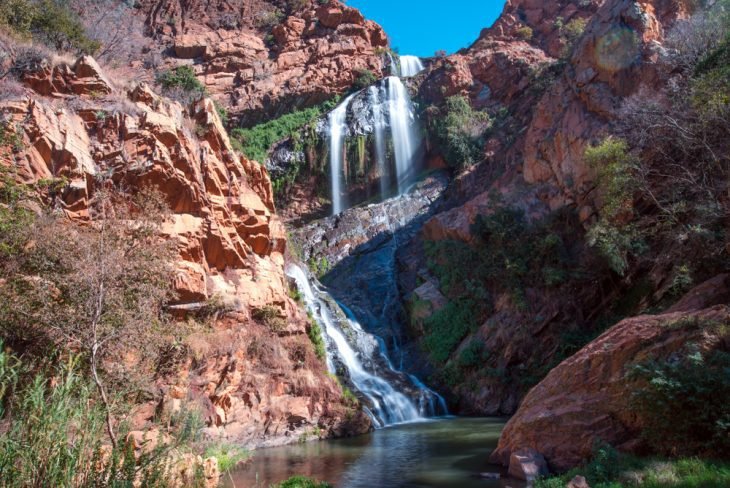The Of Johannesburg North Attractions
The Of Johannesburg North Attractions
Blog Article
Excitement About Johannesburg North Attractions
Table of ContentsJohannesburg North Attractions Things To Know Before You Get ThisUnknown Facts About Johannesburg North Attractions4 Simple Techniques For Johannesburg North AttractionsNot known Facts About Johannesburg North AttractionsAll About Johannesburg North AttractionsRumored Buzz on Johannesburg North Attractions
The city grew on the edge of the Witwatersrand Main Reef, a subterranean stratum of gold-bearing quartz-silica empire that arcs for hundreds of miles under the Highveld - Johannesburg North attractions. Many of the gold mines in the city stopped operation in the 1970s, however in its day the Witwatersrand gold market accounted for more than 40 percent of the globe's yearly gold manufacturing.Johannesburg has a pleasant environment. The city enjoys concerning eight hours of sunlight per day in both winter and summertime.
What rain the city obtains drops nearly solely in the summer season, commonly in spectacular late-afternoon electric tornados. Air pollution postures a substantial issue, especially in the cold weather, when thermal inversions restrain the westward flow of air from the Indian Ocean. Contamination is most severe in the largely settled Black municipalities on the city's periphery, where lots of locals still count on coal for gas.

Examine This Report on Johannesburg North Attractions
The equilibrium of the city is inhabited by whites. Holiday accommodation varies in character and quality.
Physical growth, although somewhat restricted by transportation, continued rapidly as migration to South Africa, and Johannesburg in particular, boosted dramatically. This issue was addressed in the 1930s when the car was presented in automation to South Africa. Cars were, generally, restricted to the affluent, and permitted them to move to the north of the city and commute right into the centre.
The majority of inadequate suburbs were combined, with inadequate blacks and whites cohabiting, although the well-off residential areas were typically scheduled for whites. This changed with the election of the National Event in the 1948 elections, who began to formalise the system called apartheid. Racism officially designated which suburban areas each race can stay in under the Team Areas Act.
The previous system of eleven phoned number areas was reorganised in 2006. Marshalltown, as seen from the top of the Carlton Centre. The M1 and M2 run behind the structures, and the southern suburban areas prolong past the highway boundary. The central city of Johannesburg lies within the city's Region F. The approximated population of the region is 200,000, [] The number of people living in the inner city on a he has a good point casual basis is unidentified, as many are unlawful immigrants. Many higher-income citizens and white people have relocated to the north suburbs and have been replaced by visit this page lower-income black people. The joblessness, education and learning, and age profiles of the location are all unknown, due to the difficulty of getting dependable details about the area.
Examine This Report about Johannesburg North Attractions
Centred on the CBD, the area includes the suburban areas of Yeoville, Bellevue, Troyeville, Jeppestown, and Berea to the east. To the west it spreads to Pageview (Johannesburg North attractions) and Fordsburg. There are little industrial locations to the south, such as City West-Denver and Benrose. Around 800,000 commuters travel through the internal city daily, and it operates as a regional buying node for site visitors from the southerly suburbs. Yeoville and Bellevue have a mix of visit site apartment structures and solitary domestic units on small great deals. The area is situated on a hilly divide that runs from eastern to west.

4 Easy Facts About Johannesburg North Attractions Shown
The eastern suburban areas are some of the earliest locations of Johannesburg, there are big areas of Jewish and other European backgrounds, the majority of the populace is English speaking. There are 3 golf training courses as well as a number of safeguarded ridges with viewsites.
Initially developed to house male migrant workers, many have actually been improved as houses for pairs and families. The suburban area was not traditionally allowed to develop work centres within the location, so almost all of its residents are travelers to other parts of the city.
Some Known Facts About Johannesburg North Attractions.
The N1 Western Bypass links the northern residential areas with the north-western suburbs. The property locations in the north suburbs are generally formal, with no considerable areas of informal real estate, or housing that lacks a permanent framework. Although this is a well-known location, there is a pattern of land usage modification from property to industrial, especially along main arterial roadways and around well-known nodes.
Roadways to the eastern and west are less well developed, as there are no freeways taking a trip in that direction. Towards the northern boundary of the city, the density of growth decreases, leaving big areas of primitive land around Midrand.
Johannesburg North Attractions - The Facts
, which is situated on a hill overlooking the inner city and Hillbrow.
Report this page